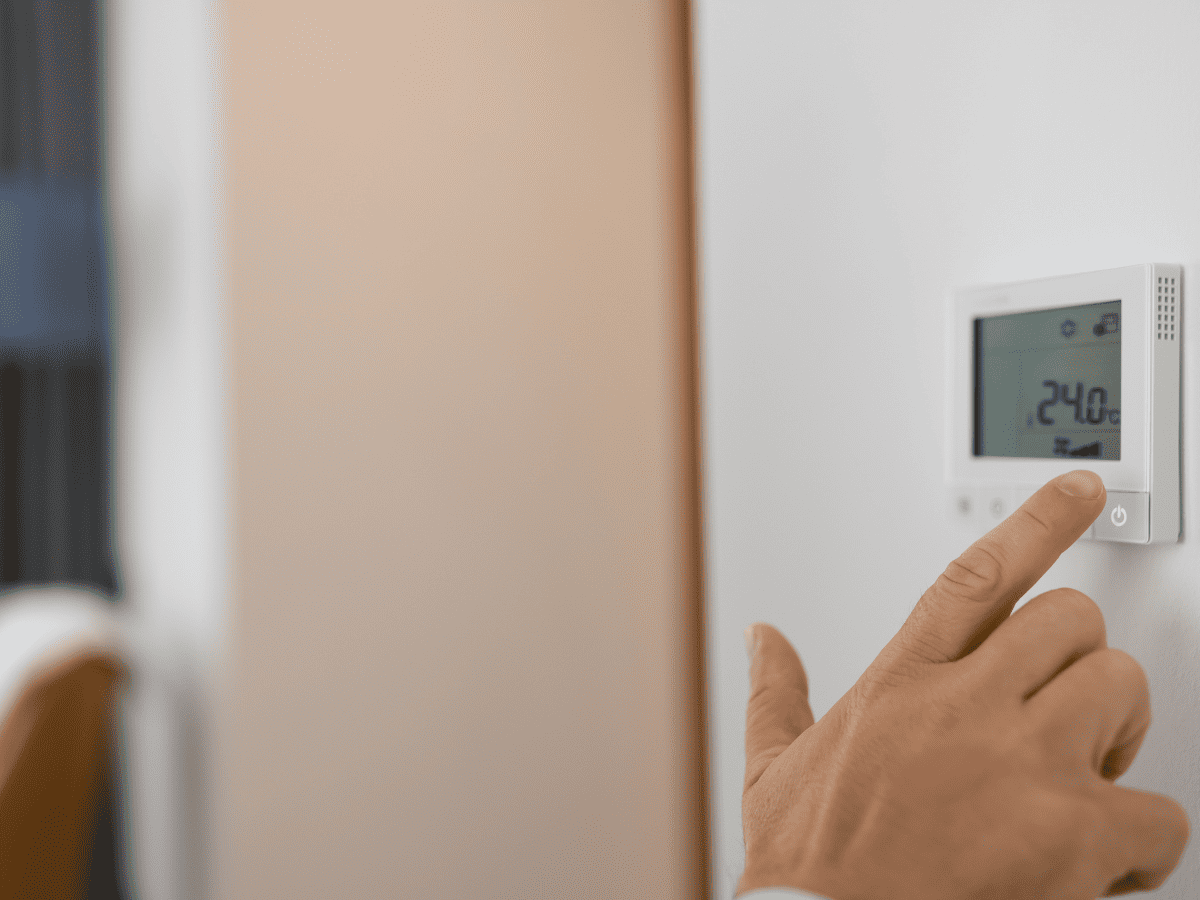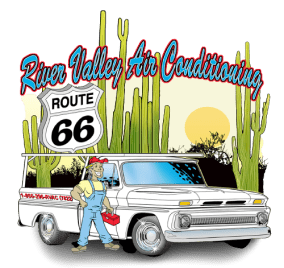It’s that time of the year when your heat pump becomes your best friend. While setting your system up for the winter temperatures, you may have noticed your unit’s “emergency heat” setting and wondered what it’s all about.
Put simply, it’s like the hidden superhero power of your heat pump, ready to leap into action when temperatures plunge or repairs are needed.
If you want to learn more about this mode and how it can help heat your home this winter, keep reading. Remember, River Valley isn’t just about the business; we’re here to provide reliable, affordable HVAC help to keep your house feeling like home.
How does a heat pump work?
Heat pumps are versatile HVAC options that provide homeowners with both heating and cooling, so they don’t have to get more than one system for both functions.
A heat pump is like a two-way street. During those sweltering summer days in regions like Nevada, the heat pump acts like an air conditioner, taking hot air from your home and transferring it outside. This keeps the air indoors nice and cool.
When it gets chillier outside, your pump does the reverse, drawing the warm air indoors to keep you comfy.
What is emergency heat mode?
Life can throw us unpredictable curveballs, especially when it comes to the warmth and comfort of our homes. When the temperatures drop significantly during a cold spell, your heat pump switches to something called emergency heating mode.
It’s like your heat pump’s very own safety net. In normal circumstances, your heat pump does an incredible job keeping your home warm by gathering heat from the chilly air outside. But sometimes if your system breaks down due to a malfunction, or because the outdoor temperature drops too low (typically if it falls below 35°F or 2°C) – that’s when you can use emergency mode.
Here, the system isn’t working but instead, fully relies on a secondary heat source, like electric heat strips or a gas furnace, to keep your home cozy and warm. Though the backup is designed to kick in automatically when needed, it can also be manually activated if your pump isn’t working properly.
If you see Emergency Heat on your system’s thermostat, you can be confident that there’s a backup plan to keep your home warm.
How does emergency heat work? When to use it
While having a backup plan is great. However, it’s important to note that emergency heat mode is not meant to be used on a daily basis but rather as a backup plan during extremely cold weather or when your heat pump can’t function in its normal heat mode.
Your heat pump’s regular heat mode (transferring warm air indoors) is incredibly energy efficient; however, the emergency mode is not. Using the emergency heat mode can cause a spike in your energy bills as it consumes more power while in use.
It’s like using a high-performance car for everyday commuting – yes, it’ll get the job done, but it will consume more fuel and be less cost-effective. So, it’s best to use the emergency heat mode sparingly and mainly as a safety net during extreme cold weather or if your heat pump is due for maintenance.
Here’s another important note: Once it’s on – even if it flips on automatically – it will stay in this mode until you manually turn it off.
To turn off the emergency heat mode, simply go to your thermostat and look for the ‘Emergency Heat’ or ‘Em Heat’ switch. Flip this switch to the ‘Off’ position, and your heat pump should revert back to its regular heating mode.
Typically, if you ever need to use emergency heating, you should call a professional technician to take a look at your system as soon as possible. They’ll take a look to make sure your system is the right size for your home, and get it back up and running.
In regions like Laughlin, Nevada, where the winter temperatures are fairly mild, you may never need to use this feature. However, it’s nice to have.
Emergency vs. Auxiliary heat modes
You may have also seen or heard of auxiliary heat mode. But what’s the difference? Both modes act as a backup to your heat pump system, but they serve slightly different purposes.
Emergency Heat Mode (EM) activates when the heat pump cannot provide enough heat due to extremely low outdoor temperatures or a technical malfunction with your system. Instead of using the heat pump’s primary system, it switches to an alternate source of heat.
Auxiliary Heat Mode (AUX), on the other hand, is designed to automatically supplement your heat pump’s heating capacity during moderately cold weather.
When temperatures drop, but not so low as to render the heat pump ineffective, the auxiliary heat kicks in to provide additional warmth alongside your system. It’s like a trusty sidekick that steps up to assist the primary system when the temperature gets chilly but not freezing.
Does my system have these modes?
Most modern heat pump systems come with both of these modes. Not sure if yours has them? Check your thermostat or your system’s user manual to confirm if your system has these features. You can also ask an expert technician, like the ones here at River Valley, to check your system for you.
Knowing your system’s capabilities will help you better understand how your heat pump operates and when to call upon its emergency or auxiliary heat modes.
Again, these are helpful in emergencies, but they do draw a considerable amount of energy and shouldn’t be used as a long-term solution if you’re trying to keep your electricity bills low.
Winter tips for heat pump owners in Nevada
Here are some tips to help you stay warm and save money this winter:
- Insulate Your Home: Ensure your home is well-insulated (walls, ceilings and window/door gaps) to prevent heat loss.
- Schedule Maintenance: Schedule regular preventive maintenance for your heat pump. A well-maintained system operates more efficiently and is less likely to break down.
- Set Your Thermostat Properly: Set your thermostat to the lowest comfortable temperature. For every degree you lower your thermostat, you could save up to 3% on heating costs.
- Leverage Sunlight: Use the natural heat from the sun to warm your home during the day. Open curtains on south-facing windows to allow sunlight in and then close them at night to reduce the chill from cold windows.
- Don’t Block Your Vents: Keep furniture and curtains away from your vents. This allows for better air circulation, enhancing the energy efficiency of your heat pump.
- Monitor the Emergency/Auxiliary modes: Keep an eye on how often your system needs to switch to these heat modes. If it’s frequently activating, it might indicate a problem with your heat pump’s primary heating system. Call a professional to check it out.
- Invest in Energy-Efficient Equipment: If your system is old, consider replacing your heat pump with a newer, energy-efficient model. Although the upfront cost might be higher, your wallet and your comfort will thank you in the long run.
Try these tips to keep your system running well, your energy bills low, and your comfort high. If you want more tips or have a question about your heating system, contact the pros at River Valley.
For the best HVAC service in the tri-state area, choose River Valley.
Now, you’re equipped with the knowledge to better understand your heat pump and keep your home warm this winter. Remember, at River Valley Air Conditioning, Inc., we’re always ready to help with your heating needs. We’re your go-to for everything HVAC, from installation, system maintenance, and repair to general questions and concerns.
When you choose the team River Valley, you’re not just a customer, we treat you like family. We promise excellent service at an affordable price that will suit your budget. Contact our office for more information.
Don’t hesitate to give us a call if you have any more questions, need assistance with your system, or are considering an upgrade.

